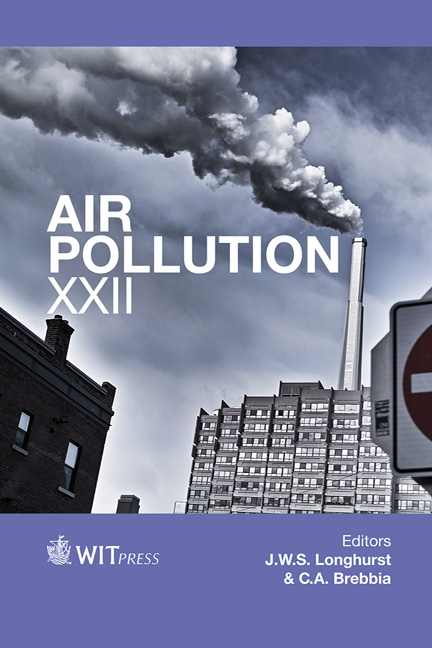Seasonal Variations In The Level Of Mutagenicity: An Assessment Of Respirable Particulate Matter In Rio De Janeiro, Brazil
Price
Free (open access)
Transaction
Volume
183
Pages
15
Page Range
87 - 101
Published
2014
Size
722 kb
Paper DOI
10.2495/AIR140081
Copyright
WIT Press
Author(s)
C. R. Rainho, S. M. Corrêa, J. L. Mazzei, C. A. F. Aiub & I. Felzenszwalb
Abstract
Respirable particles (PM2.5) can become associated with organic matter containing several compounds such as polycyclic aromatic hydrocarbons (PAHs). Many PAHs have been identified as cancer-inducing chemicals. The mutagenicity of airborne particles is generally associated with PAHs, but recent reviews show that PAHs may not be the predominant mutagens in atmospheric pollution, and that nitroaromatic compounds, aromatic amines and aromatic ketones, often found in moderately polar or highly polar organic fractions, are potent mutagens. Nitro-polycyclicaromatics (nitro-PAHs) are persistent environmental mutagens and can be found in airborne suspended particles from direct sources such as diesel and gasoline exhausts, or may be products of atmospheric reactions in the presence of NO2 and NO3 radicals. In the present work we compared PAH levels and mutagenicity using gas chromatography spectrometry and the Salmonella/microsome assay on organic extracts of PM2.5 for Salmonella typhimurium strain TA98. The samples were collected in two periods: (I) July to October 2010 and (II) November 2010 to May 2011 at three sites in Rio de Janeiro – (1) low urban traffic at the University campus; (2) heavy urban traffic at Brasil Avenue and (3) Rebouças tunnel. We also performed measurements of nitro-PAH levels for November 2010 to May 2011. For both periods, site 3 showed the highest concentrations of PAHs and nitro-PAHs. Period I showed the higher values of rev/m3. Mutagenic frameshift responses in the absence of metabolic activation were detected at all the sites in periods I and II. In the presence of metabolic activation this response was observed for all three sites in period I, but only for site 3 in period II. Nitroarenes and dinitroarenes were detected at all three sites in period I. In period II, the presence of nitroarenes was also detected at all sites, but dinitroarenes were only detected at sites 2 and 3. The information generated in this study shows that different levels of PAHs and nitroderivatives, influenced by seasonal variations in climatic conditions, probably contribute to the detected airborne mutagenicity.
Keywords
seasonal variations, mutagenicity assessment, respirable particulate matter, polycyclic aromatic hydrocarbons, nitro-polycyclicaromatics.





